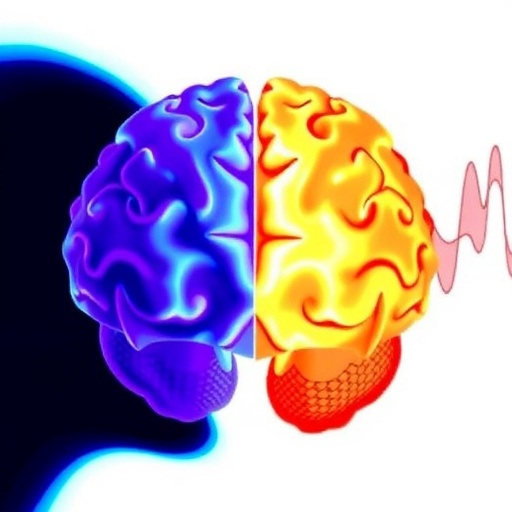In a groundbreaking study led by Zhu, H., Liang, F., and Zhao, T., a pioneering approach to predicting the molecular marker status of gliomas has been unveiled, showcasing the remarkable capabilities of a novel model named GDI-PMNet. Gliomas, a class of brain tumors encompassing various subtypes, present significant challenges in both diagnosis and treatment. The intricacies of these tumors stem from their molecular diversity and the heterogeneity associated with their biological characteristics. Understanding the molecular markers of gliomas is crucial for tailoring personalized therapeutic strategies for patients, thus increasing their chances of effective treatment.
The GDI-PMNet model, which is central to this research, integrates data from multiple sources, applying sophisticated machine learning techniques to interpret complex biological information. This multi-faceted approach capitalizes on advancements in genomic data analysis, allowing researchers to unravel the convoluted relationships between various molecular markers and glioma phenotypes. By utilizing extensive datasets, GDI-PMNet aims to deliver insights that traditional diagnostic methods may overlook.
The machine learning framework within GDI-PMNet employs an ensemble of algorithms designed to improve predictive accuracy. This aspect of the research is particularly compelling, as it highlights a shift in how medical professionals might approach the diagnostics of gliomas. The combination of diverse datasets enables GDI-PMNet to learn from a broad spectrum of glioma cases, increasing its utility across different patient demographics and tumor subtypes. The adaptability of the model is a critical asset, given the variable nature of brain tumors.
In executing this research, the authors emphasize the importance of integrating clinical data with comprehensive molecular profiles. By synthesizing these two data streams, GDI-PMNet can infer the likely status of molecular markers with unprecedented accuracy. The research further illustrates that the combination of clinical presentations and genetic information leads to substantial improvements in diagnostic capabilities.
The implications of this research extend far beyond academia, touching on the very essence of patient care in neuro-oncology. Early and accurate identification of molecular marker statuses not only enhances prognostic accuracy but also informs decisions regarding treatment regimens. As glioblastoma multiforme and other aggressive gliomas continue to pose significant treatment hurdles, the insights garnered from GDI-PMNet will be invaluable in guiding targeted therapies and clinical trials.
Moreover, the study does not merely present data but also emphasizes a paradigm shift in the treatment of gliomas. Current clinical practices often rely on a one-size-fits-all approach depending on histopathological classification. However, the molecular-based insights provided by GDI-PMNet advocate for a more nuanced understanding, one that considers the genetic underpinnings of each tumor. This would result in personalized treatment regimens that reflect the unique characteristics of a patient’s tumor.
As with any innovation in the medical field, one of the pivotal aspects to consider is the potential integration of such advanced models into clinical workflows. The authors propose that training programs for oncologists and associated medical professionals should evolve to incorporate data-driven methodologies. This transition is essential for ensuring that cutting-edge research translates into practical applications that advance patient outcomes.
Noteworthy is the collaboration embedded within this research. By bringing together experts from different disciplines, such as computational biology and clinical practice, Zhu et al. demonstrate the power of interdisciplinary work in addressing complex medical questions. Their findings highlight the necessity of fostering collaborative environments in research, where technological and medical expertise can intersect to yield transformative innovations.
In terms of future directions, the authors are optimistic about the potential of GDI-PMNet to adapt as new genomic data becomes available. Continuous learning will ensure that the model remains relevant and accurate, reflecting the dynamic nature of glioma biology. By continually updating the datasets that inform the model, researchers can ensure that the insights derived from GDI-PMNet remain at the forefront of therapeutic advancements.
The study of gliomas is bound to evolve as machine learning models like GDI-PMNet become more widely adopted. As researchers work diligently to improve predictive frameworks, the potential for enhanced therapeutic strategies expands. Patients diagnosed with gliomas, who often face a daunting prognosis, stand to benefit significantly from these advancements, moving towards a future where treatment is not only effective but also tailored to individual needs.
Moreover, the implications of this research extend to other areas of oncology. The methodologies developed in this study could be applied to various other tumor types, broadening the scope of GDI-PMNet beyond gliomas. The adaptability of machine learning frameworks allows for the repurposing of these tools, demonstrating their value across different diseases characterized by molecular complexity.
In conclusion, the research conducted by Zhu, H., Liang, F., and Zhao, T. marks a significant milestone in the fight against gliomas. The innovative GDI-PMNet model promises to revolutionize how these tumors are diagnosed and treated, providing a robust framework for understanding their molecular architectures. As the field progresses, the integration of data-driven methodologies into clinical practice will become increasingly essential, paving the way for a new era in personalized medicine.
The ongoing work in this area not only serves as an inspiration for future research but also underscores the urgency of adapting to emerging technologies in healthcare. The vision presented in this study encapsulates a future where precision medicine is not just an aspiration but an operational reality for every patient battling the challenges posed by gliomas.
Subject of Research: Glioma Molecular Marker Prediction
Article Title: Joint prediction of glioma molecular marker status based on GDI-PMNet
Article References:
Zhu, H., Liang, F., Zhao, T. et al. Joint prediction of glioma molecular marker status based on GDI-PMNet.
J Transl Med 23, 1030 (2025). https://doi.org/10.1186/s12967-025-07021-0
Image Credits: AI Generated
DOI:
Keywords: Gliomas, Molecular Markers, GDI-PMNet, Personalized Medicine, Machine Learning, Oncological Research
Tags: advanced diagnostic techniques for gliomasbiological heterogeneity of gliomasdata integration for cancer researchensemble algorithms in medical researchGDI-PMNet glioma marker predictiongenomic data analysis in oncologyglioma subtype classificationinnovative approaches to glioma treatmentmachine learning in glioma diagnosismolecular markers in brain tumorspersonalized treatment for gliomaspredictive modeling for gliomas





